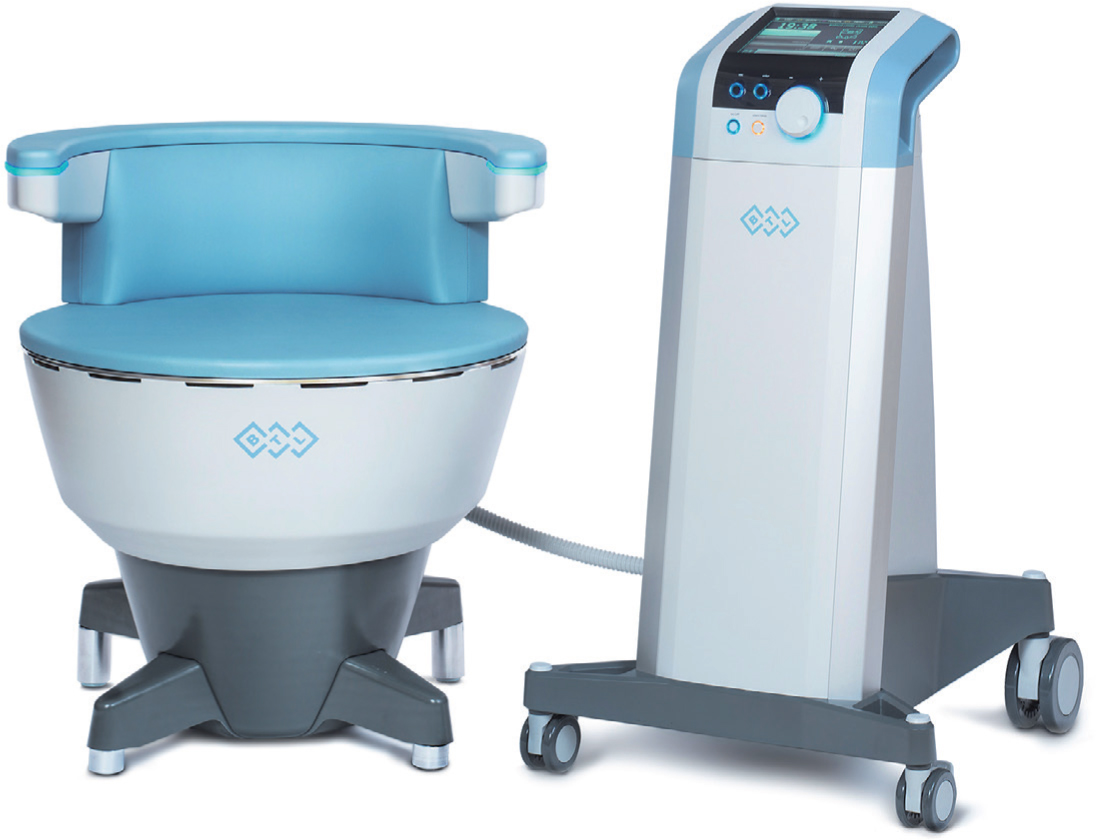
Understanding urinary incontinence
Urinary incontinence (UI) is a common condition characterised by the involuntary leakage of urine, affecting millions of individuals worldwide.
The primary types of UI include:
- Stress urinary incontinence (suI): Leakage during activities that increase intra-abdominal pressure, such as coughing, sneezing or exercising.
- Urge urinary incontinence (UUI): A sudden, intense urge to urinate, often resulting in leakage before reaching the toilet.
- Mixed urinary incontinence (MUI): A combination of both stress and urge symptoms.
Beyond the physical inconvenience, UI significantly affects emotional well-being, often leading to embarrassment, reduced self-esteem, and social withdrawal (Samuels et al, 2019). With an increasing awareness of pelvic health, there is growing demand for non-invasive, effective treatments that enhance intimate wellness.
Introducing the EMSELLA device
EMSELLA is a non-invasive treatment designed to strengthen pelvic floor muscles and improve bladder control using high-intensity focused electromagnetic (HIFEM) technology. The device delivers deep supramaximal contractions to rehabilitate weak pelvic muscles and restore neuromuscular control.

How does EMSELLA work?
During an EMSELLA session, patients sit fully clothed on a specialised chair. The device emits focused electromagnetic energy, penetrating deep into the pelvic floor muscles. This stimulation induces supramaximal contractions significantly stronger than those achieved voluntarily. A single 28-minute session can produce over 11,000 contractions, which is equivalent to performing thousands of kegel exercises (Silantyeva et al, 2020).
These contractions result in:
- Muscle re-education: strengthening and reactivating weakened pelvic muscles.
- Improved bladder control: reducing leakage incidents and urgency.
- Enhanced intimate wellness: patients often report increased sexual satisfaction and confidence.
Ideal candidates for EMSELLA
EMSELLA is suitable for a wide range of individuals experiencing pelvic floor dysfunction, including:
Postpartum women
Pregnancy and childbirth weaken pelvic floor muscles, leading to stress urinary incontinence. EMSELLA provides a safe, effective, and non-invasive method to restore muscle tone and bladder control post-childbirth.
Menopausal and aging women
Hormonal changes during menopause contribute to pelvic floor muscle atrophy and loss of vaginal tone, often resulting in incontinence and decreased sexual function. EMSELLA offers a non-hormonal solution to address these issues (Lukanovic et al, 2021).
Elderly patients
Aging naturally leads to muscle weakness and reduced mobility, making traditional pelvic floor exercises difficult. EMSELLA provides a hands-free, effortless treatment that helps restore continence and pelvic function.
Male patients
While often overlooked, men also suffer from urinary incontinence, particularly after prostate surgery. EMSELLA has demonstrated effectiveness in improving bladder control and overall pelvic health in men (Samuels et al, 2019).
Athletes and fitness enthusiasts
Even physically active individuals can develop pelvic floor dysfunction due to excessive core training or high-impact sports. EMSELLA supports core stability and muscle coordination, enhancing overall physical performance.
Economic benefits for clinics
For aesthetic and medical practitioners, EMSELLA presents a strong return on investment (ROI) due to several key advantages:
- Hands-free operation: The device requires minimal staff involvement, allowing practitioners to treat multiple patients simultaneously.
- No consumable costs: unlike other medical treatments, EMSELLA does not require additional consumables, making it highly cost-effective.
- High patient demand: with the growing market for intimate wellness and non-invasive solutions, EMSELLA attracts a broad patient base, increasing revenue potential (BTL EMSELLA, n.d.).
Patient case study
Patient profile
- Name: Sarah (pseudonym)
- Age: 42
- Condition: stress urinary incontinence post-childbirth
Treatment plan
Sarah underwent six EMSELLA sessions over three weeks. Each session lasted 28 minutes, during which she experienced painless but intense pelvic floor contractions.
Results
- Post-treatment: Sarah reported a significant reduction in urine leakage, enabling her to engage in physical activities without fear of accidents.
- Follow-up (3 Months Later): She maintained improved bladder control and expressed enhanced confidence in social and intimate settings.
Conclusion
EMSELLA represents a transformative advancement in the treatment of urinary incontinence and pelvic floor dysfunction. Its non-invasive nature, scientifically proven efficacy, and broad patient suitability make it an invaluable addition to aesthetic and medical practices. By offering a safe, effective, and hands-free solution, EMSELLA helps patients regain confidence, improve quality of life, and enhance intimate wellness.




